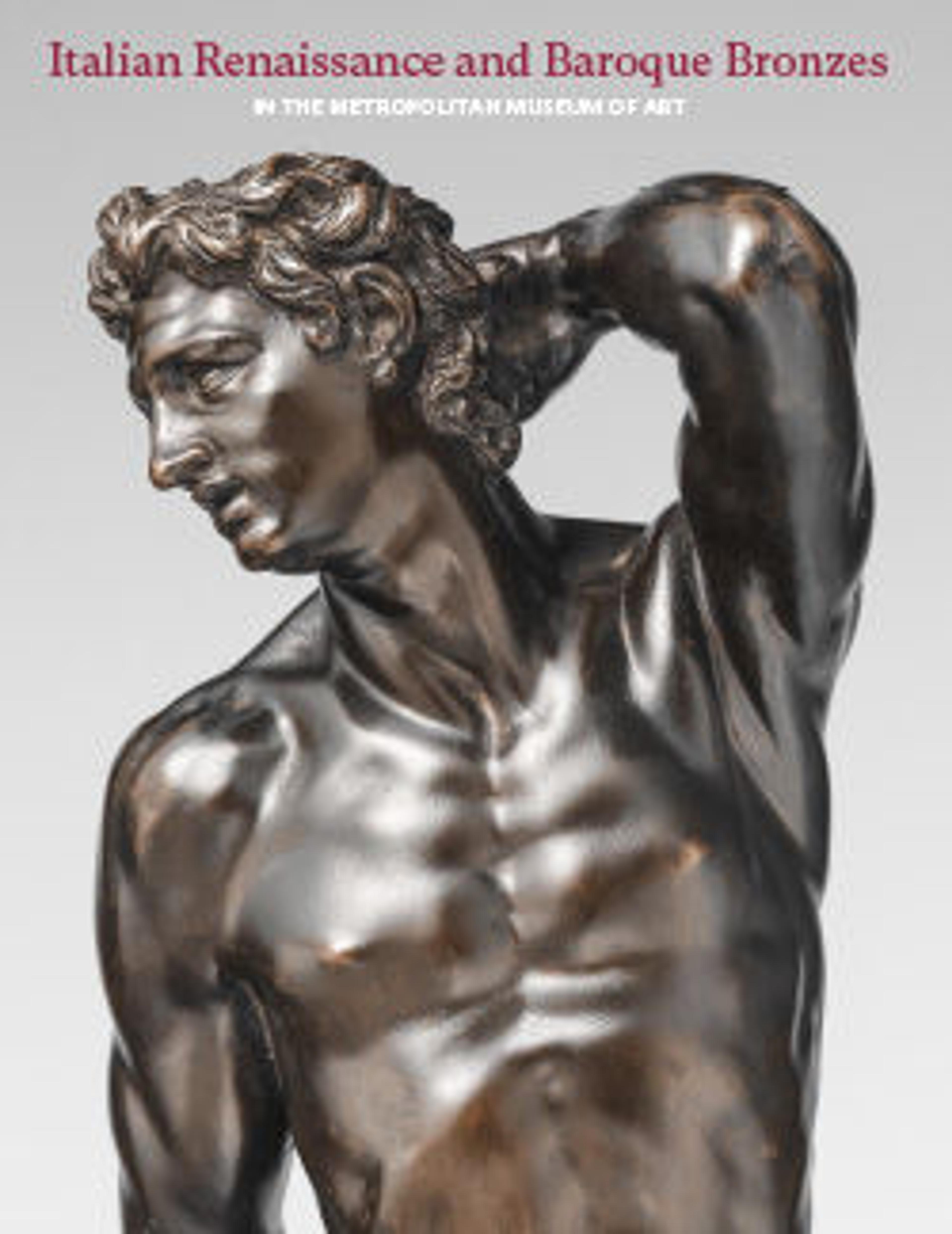Doorknocker
A knocker inserted through the wood of a door, when struck against a metal plate that was likewise affixed to the door, allowed visitors to announce their presence to those within. This bronze knocker was cast in the form of a ring, around which was forged the horizontal iron strap that held it in place; the narrow slot at the end of the strap helped secure it on the other side of the door with an iron wedge. The weight and thickness imply a door of considerable stoutness. The object shows plenty of age and use, evincing a rich natural patina, nicks, and a well-rubbed, slightly flattened area behind the lower back of the knocker, where it struck the now-missing plate. The ringlike composition incorporates acanthus and sea creatures somewhat resembling dolphins, the mouths of which form a bezel of sorts for the diamond in which it terminates. The most celebrated imagery to include a diamond belonged to the Medici family in Florence, but it lacked acanthus and dolphinlike sea life.[1] The ring could signify any marital alliance. The handsome forms and facture of this unstudied object do not, for that matter, appear particularly Florentine.
-JDD
Footnotes
(For key to shortened references see bibliography in Allen, Italian Renaissance and Baroque Bronzes in The Metropolitan Museum of Art. NY: The Metropolitan Museum of Art, 2022.)
1. No such combinations appear in Langedijk 1981–87.
-JDD
Footnotes
(For key to shortened references see bibliography in Allen, Italian Renaissance and Baroque Bronzes in The Metropolitan Museum of Art. NY: The Metropolitan Museum of Art, 2022.)
1. No such combinations appear in Langedijk 1981–87.
Artwork Details
- Title:Doorknocker
- Date:late 15th–early 16th century
- Culture:Central Italian
- Medium:Bronze, iron pin
- Dimensions:Overall (confirmed): 11 7/8 × 6 1/2 × 2 in. (30.2 × 16.5 × 5.1 cm)
- Classification:Metalwork-Bronze
- Credit Line:Rogers Fund, 1927
- Object Number:27.14.13
- Curatorial Department: European Sculpture and Decorative Arts
More Artwork
Research Resources
The Met provides unparalleled resources for research and welcomes an international community of students and scholars. The Met's Open Access API is where creators and researchers can connect to the The Met collection. Open Access data and public domain images are available for unrestricted commercial and noncommercial use without permission or fee.
To request images under copyright and other restrictions, please use this Image Request form.
Feedback
We continue to research and examine historical and cultural context for objects in The Met collection. If you have comments or questions about this object record, please contact us using the form below. The Museum looks forward to receiving your comments.
